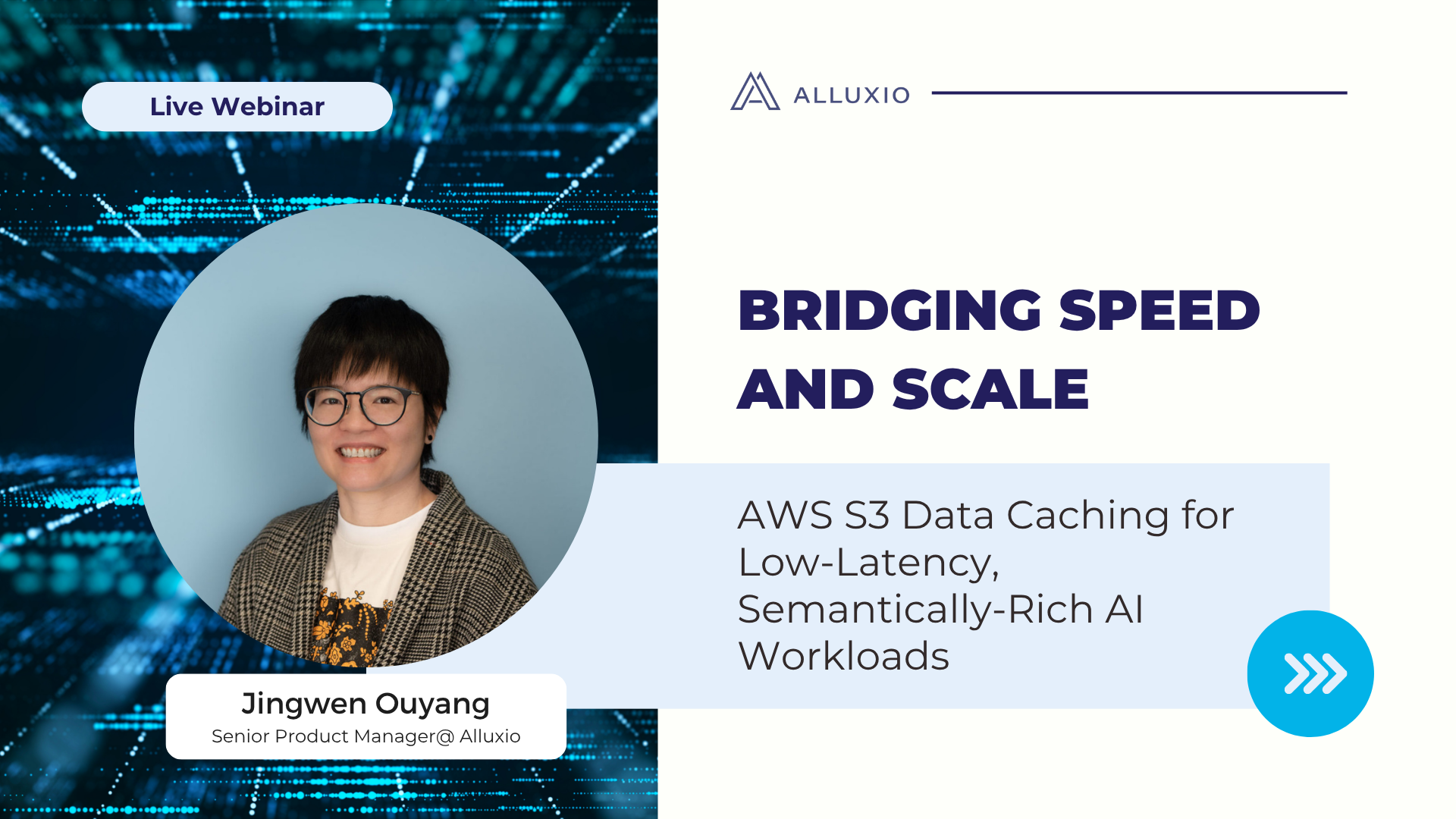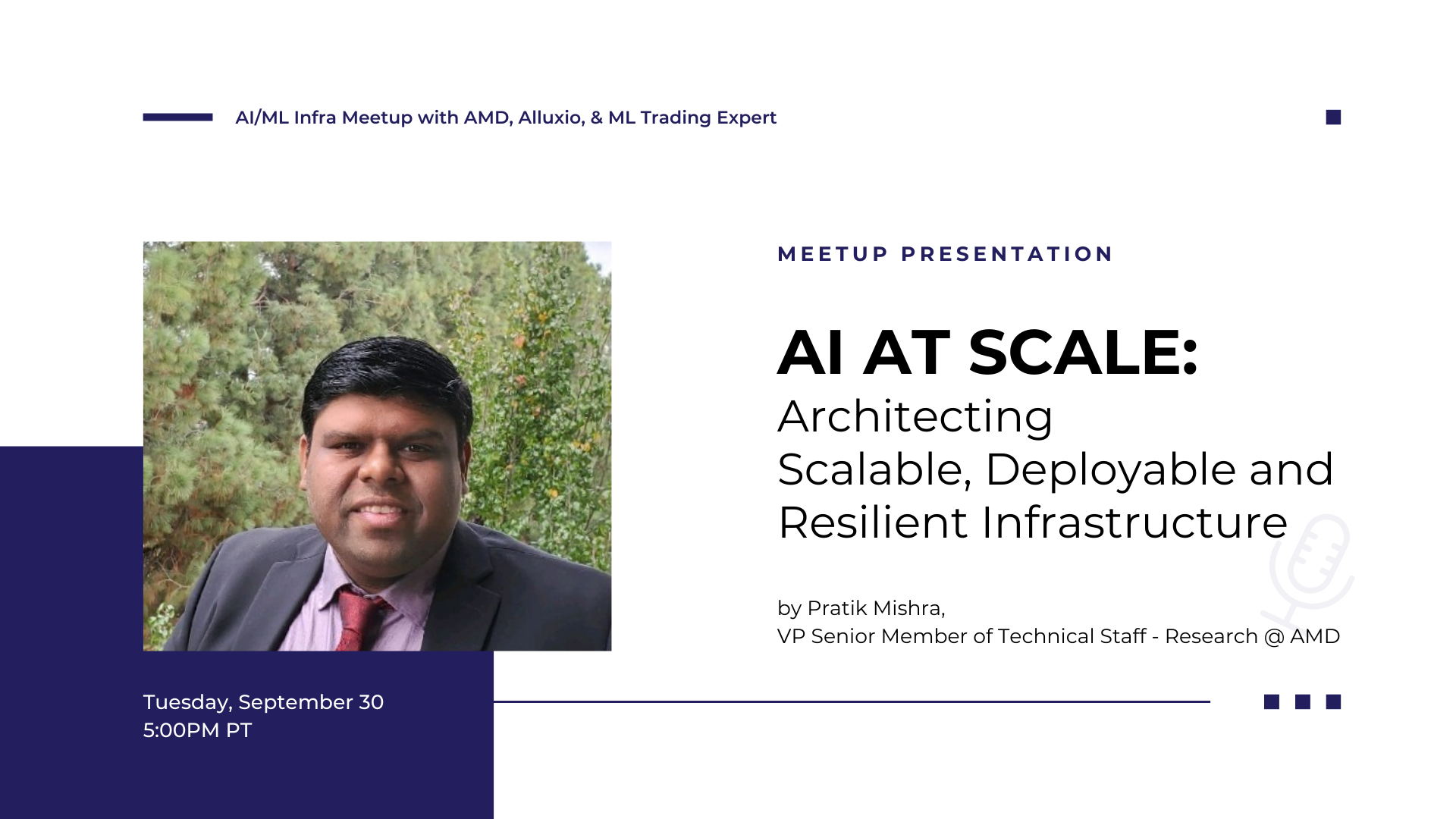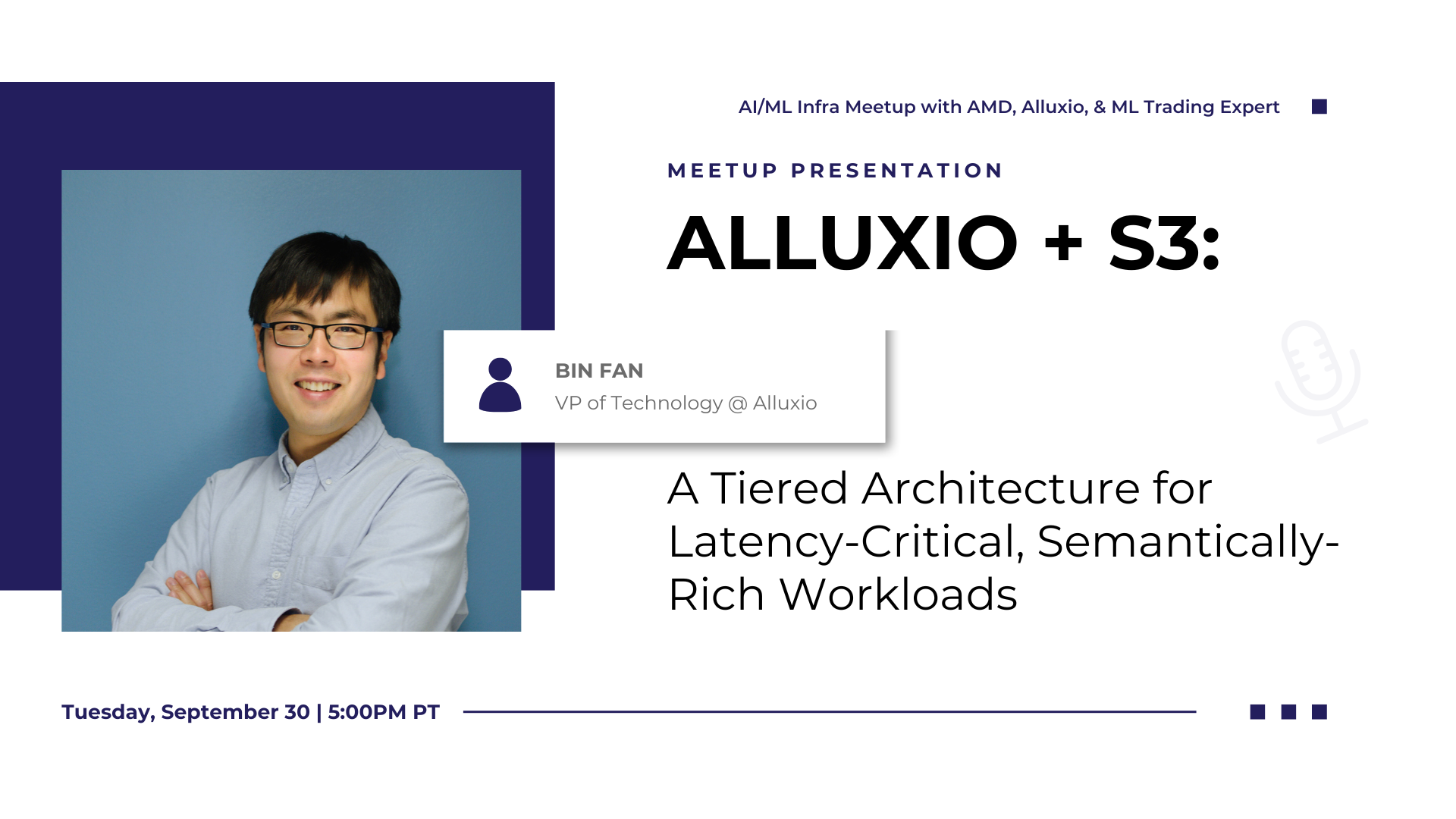Products
Tech Talk: How the Development Bank of Singapore solves on-prem compute capacity challenges with cloud bursting
November 14, 2019
The DBS team was tasked to solve their compute capacity problem. They wanted to provide faster insights and analyze data for a range of use cases but didn’t have the ability to scale compute elastically on-prem.
One use case that challenged them was customer call analysis. With the millions of customer calls they get every year, DBS manages over 50TB of customer data and audio files. This data needed to reside on-prem for compliance reasons. With on-prem compute limitations, they looked to the public cloud to analyze this data and selected “zero-copy” bursting as the best approach.
In this tech talk, we’ll discuss why DBS turned to Alluxio’s bursting approach to help solve these challenges. Vitaliy Baklikov, SVP at DBS, will discuss:
- Challenges and inefficiencies with their prior data stack
- Moving to a disaggregated data stack using Alluxio
- Bursting data without persisting in the cloud
- An overview of Alluxio’s “zero-copy” hybrid bursting solution
The DBS team was tasked to solve their compute capacity problem. They wanted to provide faster insights and analyze data for a range of use cases but didn’t have the ability to scale compute elastically on-prem.
One use case that challenged them was customer call analysis. With the millions of customer calls they get every year, DBS manages over 50TB of customer data and audio files. This data needed to reside on-prem for compliance reasons. With on-prem compute limitations, they looked to the public cloud to analyze this data and selected “zero-copy” bursting as the best approach.
In this tech talk, we’ll discuss why DBS turned to Alluxio’s bursting approach to help solve these challenges. Vitaliy Baklikov, SVP at DBS, will discuss:
- Challenges and inefficiencies with their prior data stack
- Moving to a disaggregated data stack using Alluxio
- Bursting data without persisting in the cloud
- An overview of Alluxio’s “zero-copy” hybrid bursting solution
Videos:
Presentation Slides:
Complete the form below to access the full overview:
.png)
Videos
Bridging Speed and Scale: AWS S3 Data Caching for Low-Latency, Semantically-Rich AI Workloads

Amazon S3 and other cloud object stores have become the de facto storage system for organizations large and small. And it’s no wonder why. Cloud object stores deliver unprecedented flexibility with unlimited capacity that scales on demand and ensures data durability out-of-the-box at unbeatable prices.
Yet as workloads shift toward real-time AI, inference, feature stores, and agentic memory systems, S3’s latency and limited semantics begin to show their limits. In this webinar, you’ll learn how to augment — rather than replace — S3 with a tiered architecture that restores sub-millisecond performance, richer semantics, and high throughput — all while preserving S3’s advantages of low-cost capacity, durability, and operational simplicity.
We’ll walk through:
- The key challenges posed by latency-sensitive, semantically rich workloads (e.g. feature stores, RAG pipelines, write-ahead logs)
- Why “just upgrading storage” isn’t sufficient — the bottlenecks in metadata, object access latency, and write semantics
- How Alluxio transparently layers on top of S3 to provide ultra-low latency caching, append semantics, and zero data migration with both FSx-style POSIX access and S3 API access
- Real-world results: achieving sub-ms TTFB, 90%+ GPU utilization in ML training, 80X faster feature store query response times, and dramatic cost savings from reduced S3 operations
- Trade-offs, deployment patterns, and best practices for integrating this tiered approach in your AI/analytics stack
October 28, 2025
AI/ML Infra Meetup | AI at scale Architecting Scalable, Deployable and Resilient Infrastructure

Pratik Mishra delivered insights on architecting scalable, deployable, and resilient AI infrastructure at scale. His discussion on fault tolerance, checkpoint optimization, and the democratization of AI compute through AMD's open ecosystem resonated strongly with the challenges teams face in production ML deployments.
September 30, 2025
AI/ML Infra Meetup | Alluxio + S3 A Tiered Architecture for Latency-Critical, Semantically-Rich Workloads

In this talk, Bin Fan, VP of Technology at Alluxio, presents on building tiered architectures that bring sub-millisecond latency to S3-based workloads. The comparison showing Alluxio's 45x performance improvement over S3 Standard and 5x over S3 Express One Zone demonstrated the critical role the performance & caching layer plays in modern AI infrastructure.
September 30, 2025
